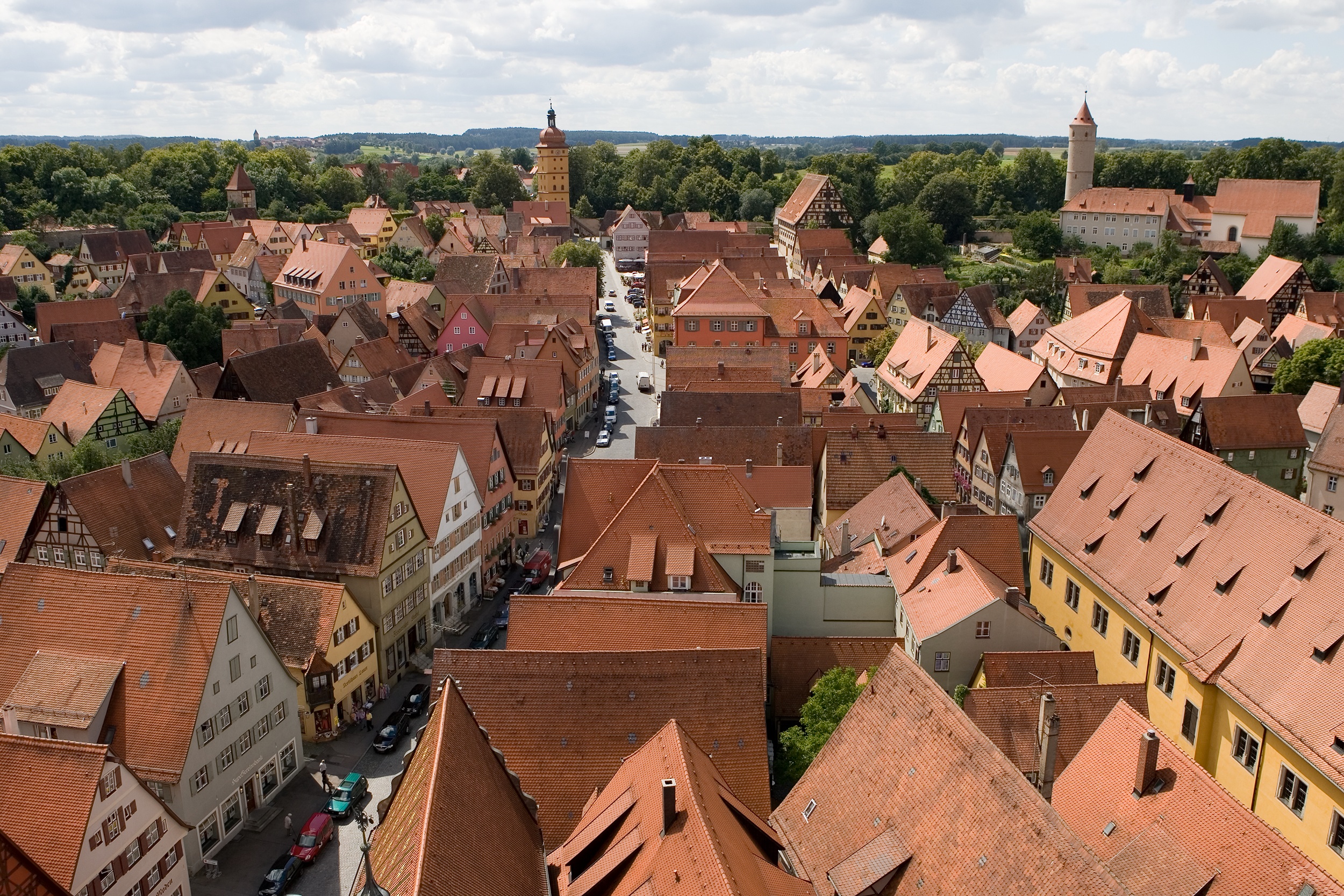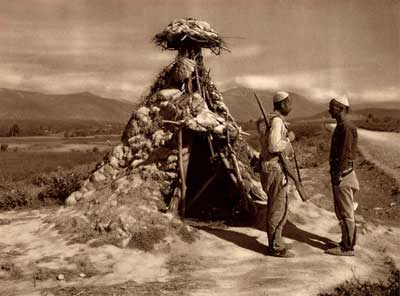|
Kadri Hyseni Tower House
The Kadri Hyseni Tower House is a cultural heritage monument in Oshlan, Vushtrri, Kosovo. History Oshlan has been settled since the 15th century, appearing in the 1455 defter of the Branković lands, an Ottoman Empire land registry. Though many tower houses in the Balkans were burned during the conflicts in which the Kingdom of Yugoslavia grew, Kadri Hyseni Tower House remains a solid example. A carved stone tower in a wide, walled courtyard, it stretches to two stories. Open square windows have gun turrets on all four sides. The roof is tiled. The tower's wooden roofed door and stone wall and well contrast to the tower and its immediate vicinity. The site's historic importance includes its use by guerrilla Kachaks fighting the Yugoslav government under Azem Galica. Emergency restoration was conducted in 2014 by the Kosovo Ministry of Culture, Youth, and Sport.< See also * |
Vushtrri
Vushtrri ( sq-definite, Vushtrria) or Vučitrn ( sr-Cyrl, Вучитрн), is a city and municipality located in the Mitrovica District in northern Kosovo. According to the 2011 census, the town of Vushtrri has 26,964 inhabitants, while the municipality has 69,870 inhabitants. Vushtrri is surrounded by the city of Mitrovica to the north, Podujeva in the east, Obiliq in the south, Drenas in the south-west, and Skënderaj in the west. The municipality of Vushtrri has 67 villages. In antiquity, Vushtrri may have been known as Viciana. When the Roman Empire invaded Dardania in the 1st century BC, the Romans added the Latin suffix 'um' to the name of Viciana, therefore becoming Vicianum. In Serbian, ''Vučitrn'' is the name of the plant Ononis spinosa, which is abundant in the region. The main characteristic of the city is its cultural and historic monuments. The city's castle, stone bridge, public bath and česme (fountain) were built centuries ago and are the biggest attractions ... [...More Info...] [...Related Items...] OR: [Wikipedia] [Google] [Baidu] |
Kosovo
Kosovo ( sq, Kosova or ; sr-Cyrl, Косово ), officially the Republic of Kosovo ( sq, Republika e Kosovës, links=no; sr, Република Косово, Republika Kosovo, links=no), is a partially recognised state in Southeast Europe. It lies at the centre of the Balkans. Kosovo unilaterally declared its independence from Serbia on 17 February 2008, and has since gained diplomatic recognition as a sovereign state by 101 member states of the United Nations. It is bordered by Serbia to the north and east, North Macedonia to the southeast, Albania to the southwest, and Montenegro to the west. Most of central Kosovo is dominated by the vast plains and fields of Dukagjini and Kosovo field. The Accursed Mountains and Šar Mountains rise in the southwest and southeast, respectively. Its capital and largest city is Pristina. In classical antiquity, the central tribe which emerged in the territory of Kosovo were Dardani, who formed an independent polity known as th ... [...More Info...] [...Related Items...] OR: [Wikipedia] [Google] [Baidu] |
1455 Defter Of The Branković Lands
Year 1455 ( MCDLV) was a common year starting on Wednesday (link will display the full calendar) of the Julian calendar. Events January–December * January 8 – Pope Nicholas V publishes ''Romanus Pontifex'', an encyclical addressed to King Afonso V of Portugal, which sanctions the conquest of non-Christian lands, and the reduction of native non-Christian populations to 'perpetual slavery'. (Later there will be a dramatic reversal when, in 1537, the bull ''Sublimis Deus'' of Pope Paul III forbids the enslavement of non-Christians.) * February 23 – The Gutenberg Bible is the first book printed with movable type. * April 8 – Pope Calixtus III succeeds Pope Nicholas V, as the 209th pope. * Spring – The Wars of the Roses begin in England. * May 1 – Battle of Arkinholm: Forces loyal to King James II of Scotland defeat the supporters of the Earl of Douglas. * May 22 – First Battle of St Albans: Richard, Duke of York, defeats and captures K ... [...More Info...] [...Related Items...] OR: [Wikipedia] [Google] [Baidu] |
Ottoman Empire
The Ottoman Empire, * ; is an archaic version. The definite article forms and were synonymous * and el, Оθωμανική Αυτοκρατορία, Othōmanikē Avtokratoria, label=none * info page on book at Martin Luther University) // CITED: p. 36 (PDF p. 38/338) also known as the Turkish Empire, was an empire that controlled much of Southeast Europe, Western Asia, and Northern Africa between the 14th and early 20th centuries. It was founded at the end of the 13th century in northwestern Anatolia in the town of Söğüt (modern-day Bilecik Province) by the Turkoman tribal leader Osman I. After 1354, the Ottomans crossed into Europe and, with the conquest of the Balkans, the Ottoman beylik was transformed into a transcontinental empire. The Ottomans ended the Byzantine Empire with the conquest of Constantinople in 1453 by Mehmed the Conqueror. Under the reign of Suleiman the Magnificent, the Ottoman Empire marked the peak of its power and prosperity, as well a ... [...More Info...] [...Related Items...] OR: [Wikipedia] [Google] [Baidu] |
Tower Houses In The Balkans
A distinctive type of Ottoman tower houses ( sq, kullë; bg, кули, ; sr, kуле, ro, culă, all meaning "tower", from Arabic (, “fort, fortress”) via Persian , meaning "mountain" or "top", and Turkish ) developed and were built in the BalkansGreville Pounds 1994p. 335 "In southeastern Europe, where the extended family was exemplified as nowhere else in the western world, the home itself was often protected, giving rise to the kula or tower- house." (Albania, Bosnia and Herzegovina, Montenegro, Bulgaria, Greece, Kosovo, Macedonia and Serbia), as well as in Oltenia, in Romania, after the Ottoman conquest in the Middle Ages by both Christian and Muslim communities. The practice began during the decline of Ottoman power in the 17th centuryGrube-Mitchell 1978, p. 204: "a distinctive form of defensive tower-dwelling, the kula, developed among both the Christian and the Muslim communities during the insecure period of the decline of the Ottoman authority in the 17th century ... [...More Info...] [...Related Items...] OR: [Wikipedia] [Google] [Baidu] |
Kingdom Of Yugoslavia
The Kingdom of Yugoslavia ( sh-Latn-Cyrl, separator=" / ", Kraljevina Jugoslavija, Краљевина Југославија; sl, Kraljevina Jugoslavija) was a state in Southeast Europe, Southeast and Central Europe that existed from 1918 until 1941. From 1918 to 1929, it was officially called the Kingdom of Serbs, Croats and Slovenes ( sh-Latn-Cyrl, separator=" / ", Kraljevina Srba, Hrvata i Slovenaca, Краљевина Срба, Хрвата и Словенаца; sl, Kraljevina Srbov, Hrvatov in Slovencev), but the term "Yugoslavia" (literally "Land of South Slavs") was its colloquial name due to its origins."Kraljevina Jugoslavija! Novi naziv naše države. No, mi smo itak med seboj vedno dejali Jugoslavija, četudi je bilo na vseh uradnih listih Kraljevina Srbov, Hrvatov in Slovencev. In tudi drugi narodi, kakor Nemci in Francozi, so pisali že prej v svojih listih mnogo o Jugoslaviji. 3. oktobra, ko je kralj Aleksander podpisal "Zakon o nazivu in razdelitvi kraljevine n ... [...More Info...] [...Related Items...] OR: [Wikipedia] [Google] [Baidu] |
Roof Tiles
Roof tiles are designed mainly to keep out rain, and are traditionally made from locally available materials such as terracotta or slate. Modern materials such as concrete, metal and plastic are also used and some clay tiles have a waterproof glaze. Roof tiles are 'hung' from the framework of a roof by fixing them with nails. The tiles are usually hung in parallel rows, with each row overlapping the row below it to exclude rainwater and to cover the nails that hold the row below. There are also roof tiles for special positions, particularly where the planes of the several pitches meet. They include ridge, hip and valley tiles. These can either be bedded and pointed in cement mortar or mechanically fixed. Similarly to roof tiling, tiling has been used to provide a protective weather envelope to the sides of timber frame buildings. These are hung on laths nailed to wall timbers, with tiles specially molded to cover corners and jambs. Often these tiles are shaped at the exposed e ... [...More Info...] [...Related Items...] OR: [Wikipedia] [Google] [Baidu] |
Kachaks
Kachaks ( sq, kaçak, sr, качаци / ''kačaci'') is a term used for the Albanian bandits active in the late 19th and early 20th century in northern Albania, Montenegro, Kosovo and Macedonia, and later as a term for the militias of Albanian revolutionary organizations against the Kingdom of Serbia (1910–18) Kingdom of Yugoslavia (1918–24), called the "Kaçak movement". Etymology The word is derived from Turkish '' kaçmak'' for "outlaw". Background History 1920–24 Kachak movement The Committee for the National Defense of Kosovo () was created in Shkodër, under Hasan Prishtina, in 1918. The committee organizationally and financially supported the kachaks in Albanian-populated areas of Yugoslavia, in Kosovo and Skopje (the former Kosovo Vilayet). Kachaks were also active around Ohrid and Bitola. On 6 May 1919 the Committee called for a general uprising in Kosovo and other Albanian-inhabited regions in Yugoslavia. The Kachaks were popular among Albanians, and local s ... [...More Info...] [...Related Items...] OR: [Wikipedia] [Google] [Baidu] |
Azem Galica
Azem Bejta (10 December 1889 – 15 July 1924), commonly known as Azem Galica, was an Albanian nationalist and rebel who fought for the unification of Kosovo with Albania. Biography Early life Azem Bejta was born in the village of Galica in the Vushtrri town of the Kosovo Vilayet, Ottoman Empire. He was the son of Bejta Galica, a rebel who died fighting against the Ottoman Empire and for Albania's separation from the Serbian state. Azem followed his father, and first fought against the Kingdom of Serbia in 1912. Resistance against Serbia Azem Galica was one of the leaders of armed resistance to Serbian rule in Kosovo in the years 1912–1914. With his Kacak fighters, he resisted Serbian forces that entered Kosovo during the Balkan Wars and early in World War I. In the winter of 1915–16, during World War I, Serbia was occupied by Bulgaria and Austria-Hungary after the Central Powers victory in Kosovo in later November 1915. Bulgaria and Austria-Hungary In 1915, after the ... [...More Info...] [...Related Items...] OR: [Wikipedia] [Google] [Baidu] |
Kosovo Ministry Of Culture, Youth, And Sport
Kosovo ( sq, Kosova or ; sr-Cyrl, Косово ), officially the Republic of Kosovo ( sq, Republika e Kosovës, links=no; sr, Република Косово, Republika Kosovo, links=no), is a partially recognised state in Southeast Europe. It lies at the centre of the Balkans. Kosovo unilaterally declared its independence from Serbia on 17 February 2008, and has since gained diplomatic recognition as a sovereign state by 101 member states of the United Nations. It is bordered by Serbia to the north and east, North Macedonia to the southeast, Albania to the southwest, and Montenegro to the west. Most of central Kosovo is dominated by the vast plains and fields of Dukagjini and Kosovo field. The Accursed Mountains and Šar Mountains rise in the southwest and southeast, respectively. Its capital and largest city is Pristina. In classical antiquity, the central tribe which emerged in the territory of Kosovo were Dardani, who formed an independent polity known as the Kingd ... [...More Info...] [...Related Items...] OR: [Wikipedia] [Google] [Baidu] |



